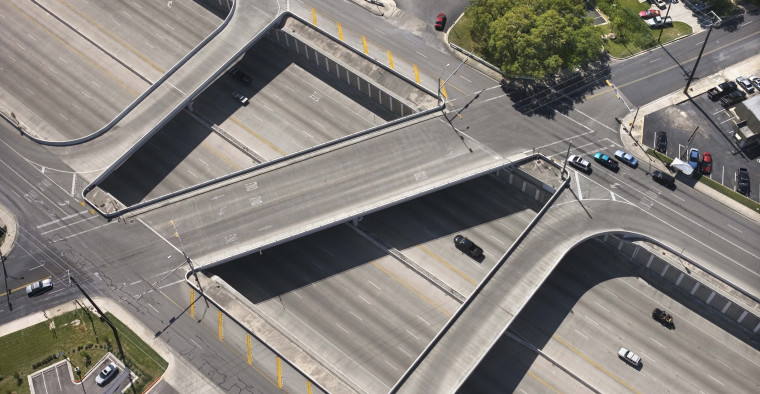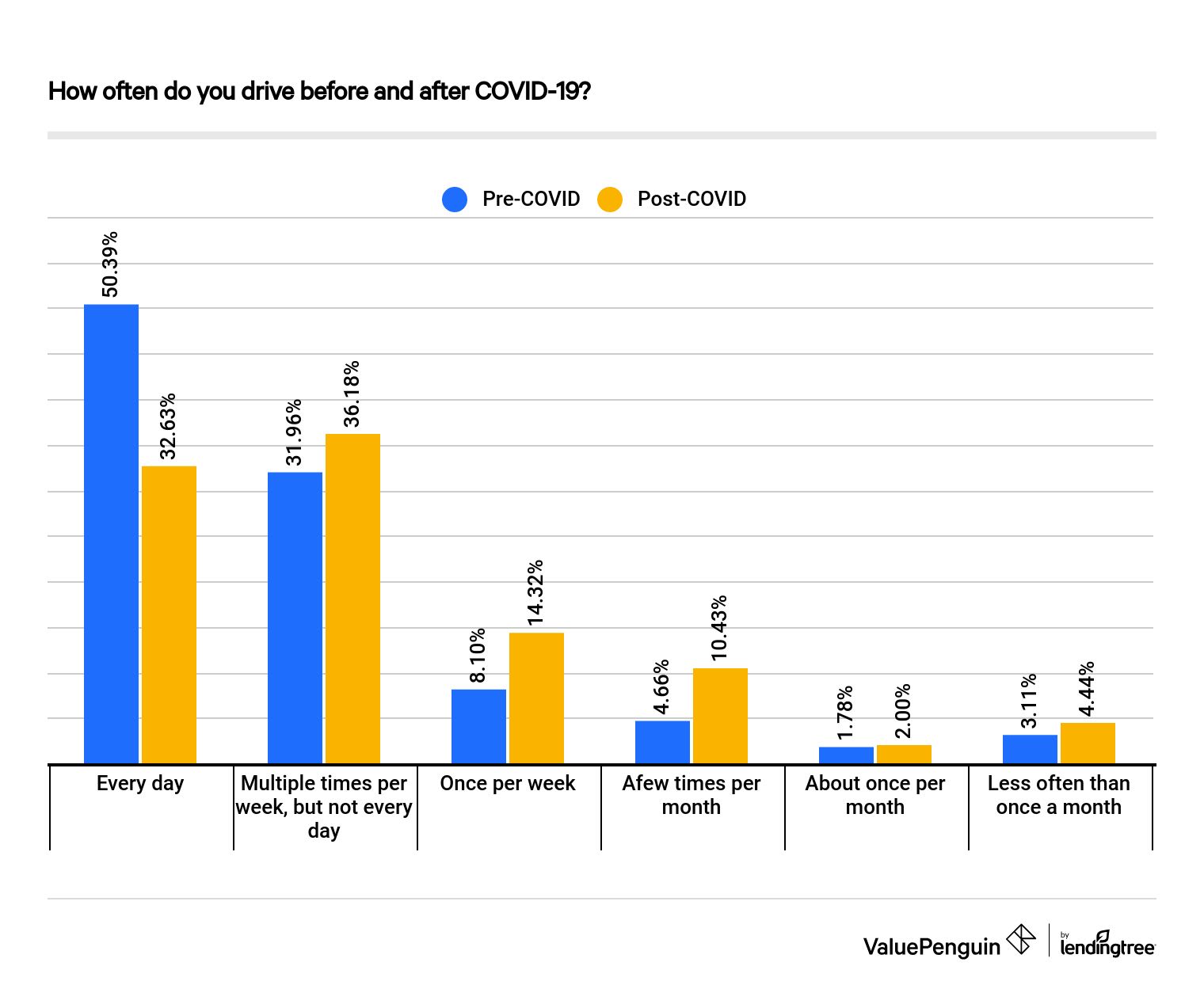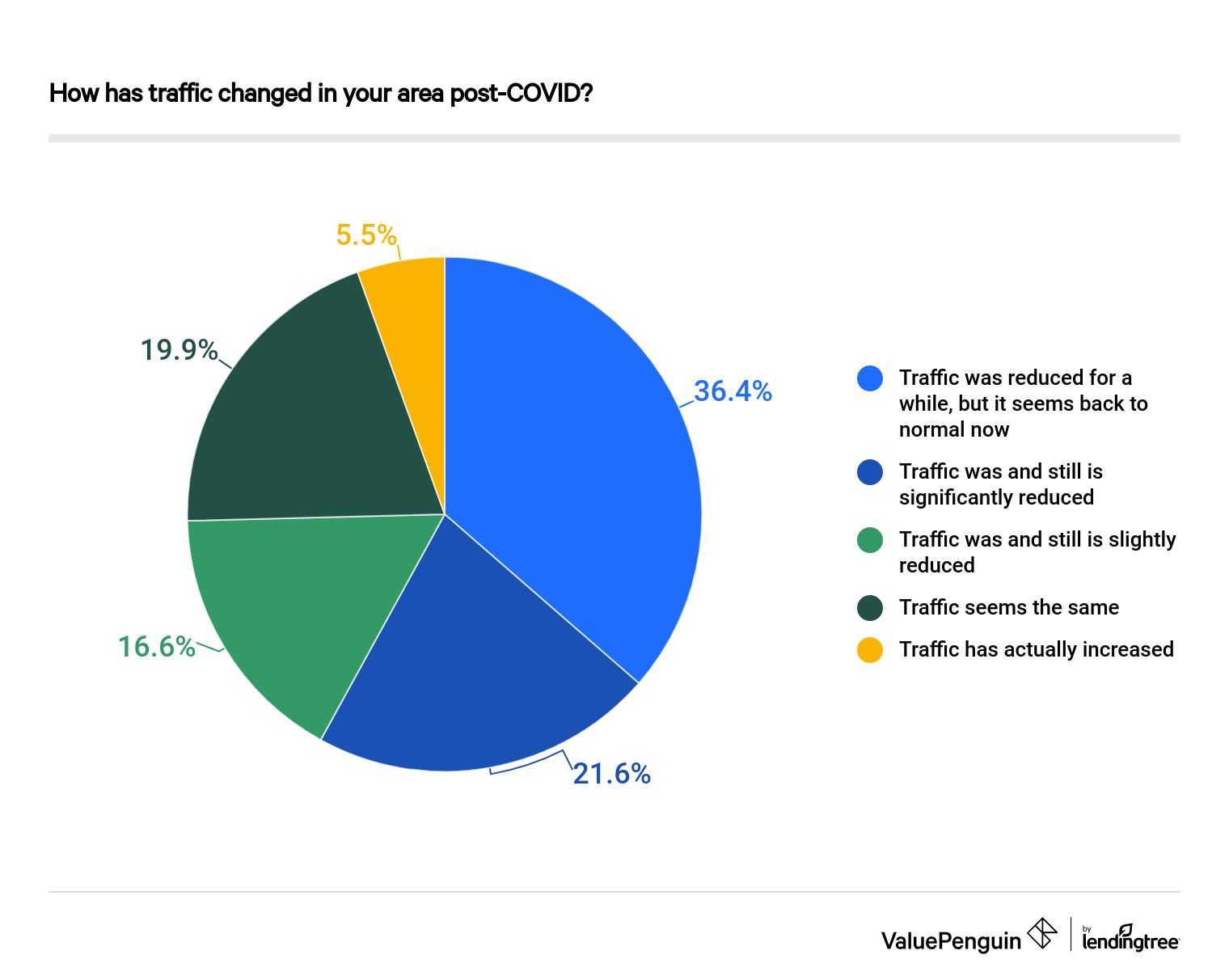Auto Insurance
61 Million Americans Stopped Commuting due to COVID-19

Additionally, with many former rideshare users no longer using those services, consumers have noticed a decrease in traffic overall. Some savvy consumers are using their decreased driving to their advantage and are paying less for auto insurance. While they may need to roll back those changes once driving returns to normal, most consumers don’t expect normalcy to return anytime soon — meaning it may be worth drivers’ while to assess their auto insurance and consider making changes.
Key findings
- About three in 10 consumers with a motor vehicle said they no longer have a commute due to COVID-19, either because they’re working from home (19%) or they were laid off or furloughed (10%).
- The number of drivers who get gas weekly dropped by 26% in August versus prior to the pandemic. In January and February, 43% of drivers said they filled up at least once a week, but just 32% said they currently do so that frequently. At the same time, the number of drivers who fill up their tank less often than once per month doubled from 4% to 8%.
- . About 14% switched to another provider that was offering better deals, 12% reduced the amount of coverage since they are driving less and 3% took one of their household’s vehicles off the policy because their family is using fewer cars.
- More than one in six consumers stopped using rideshare services like Lyft and Uber altogether due to the pandemic. An additional 13% said they’re still using those services, but much less frequently.
As many Americans stopped commuting, traffic remains reduced
About three in 10 consumers with a motor vehicle said they no longer have a commute due to COVID-19, either because they’re working from home (19%) or they temporarily or permanently lost their jobs (10%).
On the other hand, 26% are back to their daily commute as of August, including essential workers (17%) and those whose employers reopened their offices (9%). (The remainder don’t have commutes either because they worked from home prior to the pandemic, or they were not working prior to the pandemic.)

Some people are driving more than others, however. A significant number of parents with kids under 18 (47%) continue to hit the road daily. And 43% of people in New England, which had many cases early on in the pandemic but has since experienced a significant recovery, are driving every day too.
On the other hand, Americans of retirement age are much less likely to drive every day. Only 22% of baby boomers and 22.5% of the silent generation were using their cars daily in August.
Drops in rideshare usage
The use of rideshare services has also dropped: More than one in six consumers stopped using rideshare services like Lyft and Uber altogether due to the pandemic. An additional 13% said they’re still using those services, but much less frequently. Uber reported that its business dropped 80% as of June.
Overall, reduced travel for work or other purposes means that survey respondents noticed a decrease in traffic. Of those surveyed, 38% of Americans said traffic remains reduced in their area amid the pandemic, though an additional 36% said that while traffic had previously dropped it is now back to pre-pandemic levels.

Americans’ reduction in driving leads to fewer gas fill-ups
As driving has taken a dip nationwide, so have Americans' trips to the gas pump. Only a third of drivers said they’re currently driving every day, compared to 50% of drivers prior to the pandemic. As a result, the number of drivers who get gas weekly dropped by 26% in August versus prior to the pandemic.
In January and February, 43% of drivers said they filled up at least once a week, but just 32% said they currently do so that frequently. At the same time, the number of drivers who fill up their tank less often than once per month doubled from 4% to 8%.
Gasoline sales between March and May plummeted 25% compared to the same period in 2019 — that's the biggest drop in U.S. fuel consumption since data collection started in 1945, and nearly five times larger than the second-biggest annual drop (1979–80).
Generation Z and baby boomers decreased their gas station fill-ups the most: The number of both Gen Z and baby boomer drivers who filled up weekly dropped by 39% — from 45% of Gen Z to 27%, and 27% of baby boomers to 17%.
However, the motivation behind the change in habits appears to be quite different. Gen Z was the age group most likely to say they'd stopped commuting due to a layoff or furlough (14% of respondents), while the majority of baby boomers (59%) say their commute hasn't changed because they aren't working at all.
Savvy consumers cut auto insurance costs amid pandemic
As drivers use their cars less during the pandemic, it's worth it for some drivers to reevaluate one major cost of car ownership: car insurance. More than a quarter of drivers made cost-cutting changes to their auto insurance amid the pandemic.
About 14% switched to another provider that was offering better deals, 12% reduced the amount of coverage since they are driving less and 3% took one of their household’s vehicles off the policy because their family is using fewer cars.
There are lots of things drivers can do to reduce their insurance bill while they drive less amid COVID-19:
Look for a better deal for equivalent coverage
This option works no matter what's going on in the world, but insurers may be offering lower prices for a policy while driving rates (and therefore insurance claims) are down. Shop around periodically for better prices, and you may find a lower premium at another insurer for the same amount of coverage you have now.
Reducing your coverage limits
If you're driving less (or not at all), you might consider reducing the amount of coverage you carry. For example, you might increase the deductible on your collision coverage, or remove extras like roadside coverage, since you're less likely to use your coverage.
There is one area where we recommend caution before making a cut: comprehensive coverage. This coverage option pays for damage to your car while you're not driving, such as if it's vandalized. Comprehensive coverage also pays to replace your car if it's stolen.
Since you're more likely to be away from your car for days or weeks at a time amid COVID-19, that may make your car an easier target for criminals. So if you needed comprehensive coverage before the pandemic, it's even more important to keep that coverage now. And if you're financing your car, you're likely required to maintain this coverage as a condition of your loan or lease.
Opt for a per-mile policy
For people who are driving much less, switching to an insurance company that charges you per mile, like MetroMile or Nationwide SmartMiles, could be an appealing option. In contrast to a typical insurance company where you pay the same bill each month regardless of how far (or when) you drive, these companies track how much you use your car using a smartphone or plug-in device, then adjust your rates accordingly.
In general, these plans are only worth it for people who drive substantially less than the national average. So if you are still using your car on a daily basis, it may not be beneficial to you.
Don't let your coverage lapse
While it might be tempting to cut costs by putting your car in the garage and letting your policy expire, we don't recommend it. Doing so is likely to be much more costly in the long run. Many states will revoke your driver's license and/or car registration if you let your insurance expire, and you can be hit with a hefty fine.
Furthermore, car insurance companies often charge more to people who let their insurance lapse. ValuePenguin previously found that a 30-day lapse in coverage could result in an increase of up to 29% on your next bill.
If you're not driving and really can't afford your insurance, call your insurance company. You may be able to suspend your policy instead. This still has serious trade-offs as you won't be able to legally drive your car, but it will come without the legal repercussions.
Methodology
ValuePenguin commissioned Qualtrics to conduct an online survey of 1,105 Americans, with the sample base proportioned to represent the overall population. The survey was fielded August 13–17, 2020.